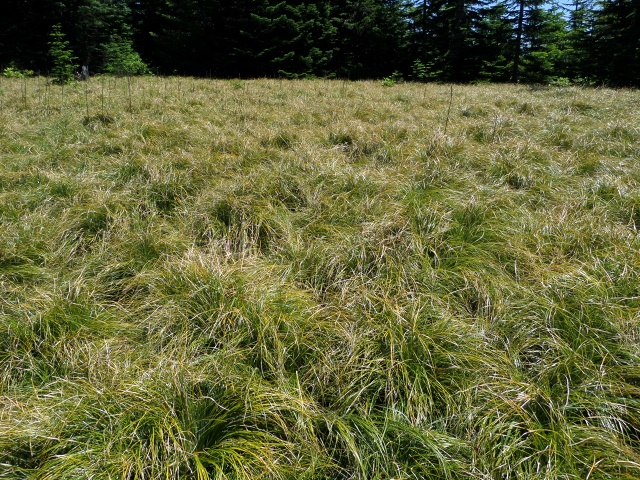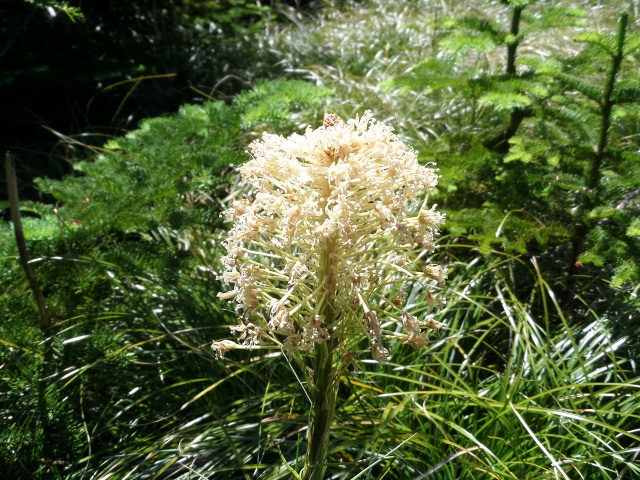Bear Grass
Also called: bear grass, squaw grass, soap grass, quip-quip
(Xerophyllum tenax)
Bear Grass was used by Native Americans who wove it into baskets. Its fibrous leaves,
which turn from green to
white as they dry, are tough, durable, and easily dyed and manipulated into tight waterproof weaves.
Bear Grass is important with respect to fire ecology. It has rhizomes which survive fire.
The plant thrives with periodic burns and is often the first plant to sprout in a scorched area.
From Hike to McIntyre Ridge 7/8/14 H329
We crossed several meadows filled with Bear Grass.
However, only a few of the Bear Grass plants were blooming. Bear Grass is a
perennial, but a Bear Grass plant does not bloom every year.
The leaves of the Bear Grass plant are easy to identify. They are long and narrow and in a clump.
If you care to see more images
Click on a thumbnail below to enlarge the image

f_bear_grass_leaves_276
|

f_bear_grass_leaves_275
|

f_bear_grass_leaves_274
|

f_bear_grass_leaves_273
|

f_bear_grass_leaves_272
|

f_bear_grass_Field_280
|

f_bear_grass_Field_279
|

f_bear_grass_Field_278
|

f_Bear_grass_290
|

f+bear_grass_266
|

f+bear_grass_265
|

f+bear_grass_264
|

f+bear_grass_263
|

f+bear_grass_262
|

f+bear_grass_261
|

f+bear_grass_260
|

